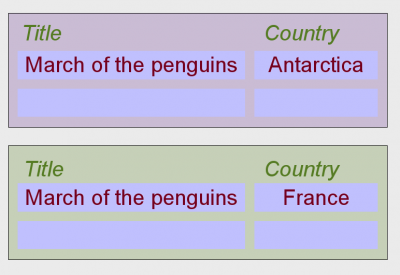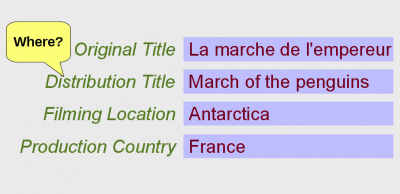From the TC 372 Workshop Compendium
Do we talk about the same thing?
Naming a data element may appear sufficient in order to give it a meaning. While this may be true for personal databases, it clearly isn't as soon as people from different backgrounds want to share the information.

|
Both statements on the left appear to be correct when viewed independently from each other.
Let's assume that the first statement is from a database of documentaries for educational purposes. Most users of this database will be more interested in where the film was shot, rather than in where it was produced.
The second statement is what we would expect from a general filmographic database where films are usually associated with a production country.
|

|
Apparently we have to consider two locations: one for shooting and one for production.
Then, "let's add another field".
In fact, having fifty or more columns (fields) in a table is not uncommon in do-it-yourself databases. Most of these columns have accumulated over time by "let's add another field"
|

|
We now learn that the film was originally released in France as La marche de l'empereur. Apparently, March of the penguins is a distribution title.
Unfortunaltely, we soon come across another distribution title, Marsz pingwinów.
"Add another field?"
|


